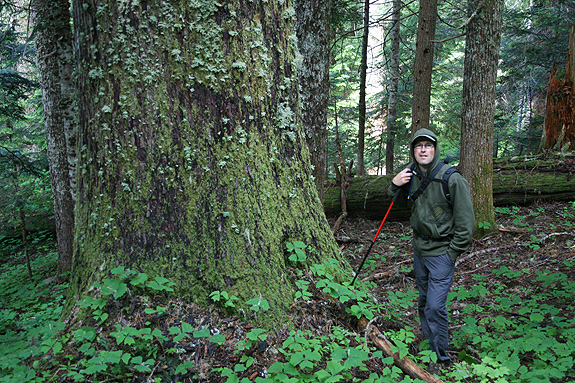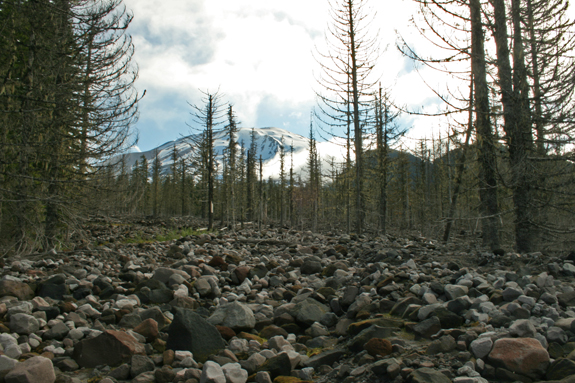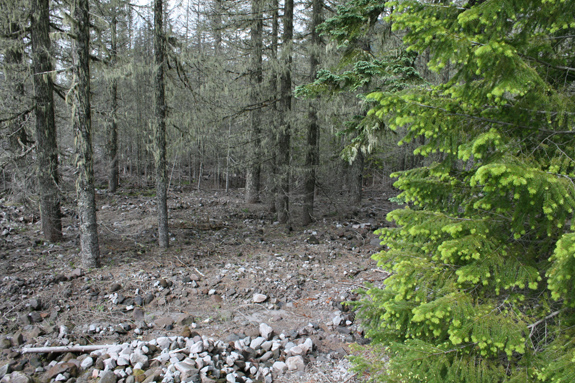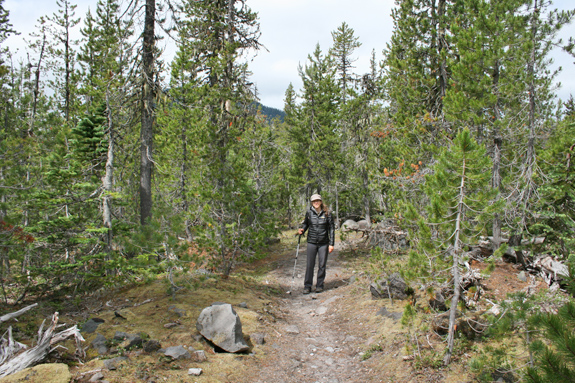Original Publication DATE: 7/23/2011
As Allison and I began to map our route through the Cascades for our summer vacation I proposed that we visit Mount Saint Helens. Allison quickly agreed but jokingly asked what conifers were there that I wanted to see–I relented that I wanted to familiarize myself with noble fir (Abies procera) outside of California and this was a place recommended by Chris Earle on his epic website. What we found in the Goat Marsh Research Natural Area was a juxtaposed landscape shaped by geological forces. We ambled through some of the most depauperate and some of the most productive forests we had ever seen. The resulting plants fostered in certain locations were there based solely on the substrate. The forests on the flows of ash, mud, and rock placed here by Mount Saint Helens allowed only the heartiest plants to survive. Other forests, hidden around the edge of protective mountains and out of reach from the mud and rock flows, grew on soils which had remained undisturbed and were thus less porous with higher nutrient contents–ultimately yielding some of the grandest forests on Earth.






References
1. Franklin, Jerry. Wilberg, Curt. 1979. Goat Marsh Research Natural Area.
(check out this document to see the pre-eruption pictures that are included, this alone is worth your time.)
Other resources:
-U.S. Forest Service website for the Goat Marsh Research Natural Areaoat Marsh …
COMMENT:
AUTHOR: Mom JMMG
DATE: 7/23/2011 2:10:26 PM
Mt. St. H~ Hope you all took the time to go to the visitor’s center and watch the video about the erruption. As usual, you posted some good pixs.
—–
COMMENT:
AUTHOR: Kouta Rasanen
DATE: 12/26/2011 4:01:44 PM
The stone fields in the photos #4-6 are not pyroclastic flows but left by the November 2006 floods. If they were 1980 pyroclastics the trees wouldn’t be in such a good shape. I visited the RNA in 2007. The floods had destroyed many roads.
—–
COMMENT:
AUTHOR: Christine Colasurdo
URL: https://www.christinecolasurdo.com
DATE: 8/11/2012 11:28:10 PM
Hello Michael,
Thanks for your interesting blog. Pyroclastic flows from the 1980 eruption are located on the north side of the volcano. The south slopes were affected by mudflows (lahars). No trees survived the 1980 pyroclastic flows; the area was incinerated. Conifers are slowly returning, though, despite browsing by deer and elk. FYI: some of the tallest conifers in the world once grew in the drainages around Mount St. Helens, especially along the Toutle River. They were logged beginning in the 19th century. I write about them in my book, Return to Spirit Lake. Thanks!